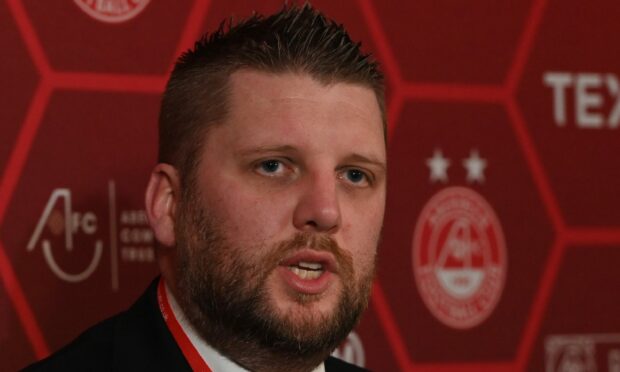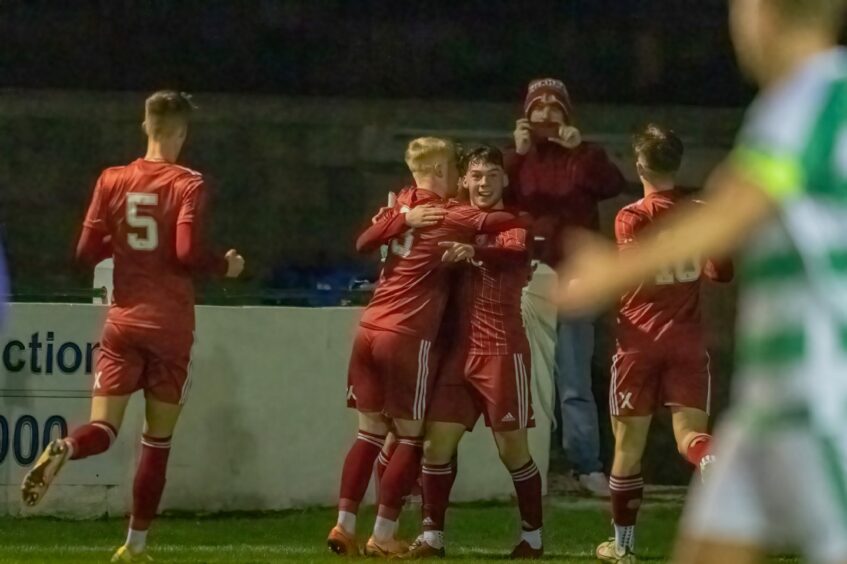Aberdeen have REJECTED the chance to enter a colts team in the SFA’s controversial Conference League – and revealed three key factors behind their decision.
The Dons had been invited to join Rangers, Celtic and Hearts’ B teams in the proposed new fifth-tier, which would sit below the four SPFL divisions and is set to kick-off for the 2024/25 season if the plans are voted through at the governing body’s AGM next month.
Under the proposals, four Premiership colts sides will be joined in the league by four Lowland League teams and two Highland League clubs, with all of the other sides currently at fifth-tier level and below effectively relegated down the pyramid by one rung.
Backers of the Conference League scheme hope it will guarantee Scotland’s brightest under-21 talents increased competitive game-time and aid in their development.
Detractors have rallied against what they consider the latest attempt to shoehorn top-flight colts sides into the senior leagues and the enforced relegation of hundreds of non-league clubs as a result.
The Press and Journal previously revealed Aberdeen’s concerns around the extra cost of having a B team in the Conference League, and whether this new system of developing youngsters would be beneficial enough to justify the expense.
We also detailed their awareness of some Dons fans’ objection to the plans – due to their support for drop-threatened Highland League teams in the north.
Costs, desire to maintain loan approach and impact on non-league see Aberdeen say no to fifth-tier place
The Dons have now officially confirmed they will not be entering a young team in the league, after a consultation process which involved the Pittodrie board and football department, including those involved in youth development.
Chief executive Alan Burrows said the club estimated Conference League involvement would cost the Reds £400,000 per year – an additional £300,000 on top of the £100,000 yearly entry fee demanded of the Premiership sides involved.
The Dons’ existing model for players who are over 18, but not yet ready for regular first-team action, is to loan them out to Championship, League One, League Two and Highland League teams.
Some of the costs associated with Conference League participation would have been the need to add significantly to what is a streamlined player pool of 18-21-year-olds currently on the Dons’ books.
Burrows said Aberdeen are keen to keep giving academy graduates loan “experience at higher levels in the pyramid”, and estimated the club would need to bring their numbers up to 55 players this age category in order to continue with the loan approach and have enough players for a colts team to take part in fifth-tier matches.
Burrows, who revealed the impact of the Conference League on Highland and Junior clubs had also been a key consideration, said: “We spent considerable time assessing the impact on our player development strategy, including the player pathway, and reviewed the cost/benefit of entering a B team in the Conference League.
“We also took account of feedback from other stakeholders, supporters and considered the decades long relationships we’ve had with Junior and Highland League clubs, including clubs who are now established in the SPFL.
“The player pathway challenge we would face with a team in the fifth tier is that ‘one size does not fit all’.
“We have young players who need experience at higher levels in the pyramid. To accommodate that, and have a full-time B team, we would need to have around 55 full-time players. We estimated additional annual costs of around £400,000.”
Aberdeen seek rule change to allow loan partnership with fellow SPFL club
Burrows hinted Aberdeen would support a change in loan regulations which would allow the Dons to establish a strategic partnership with another SPFL club, likely allowing several youngsters to be farmed out to the partner club each season.
Currently, while there is not cap on the amount of under-21 players clubs can loan out overall, the amount going from one club to another is limited to three.
Burrows added: “While we have said no to the SPFL and Scottish FA about entering the proposed Conference League in 2024/25, we are keen to explore other options such as a strategic partnership with another SPFL club, where expanding some of the loan regulations would be key to ensuring Aberdeen FC continues to be one of the best developers of young talent in the country.
“We will therefore continue to push our best young talent to our first team as quickly as possible, along with using the loan market to provide player pathway experience, which has been impactful for the club over many years.”


Conversation